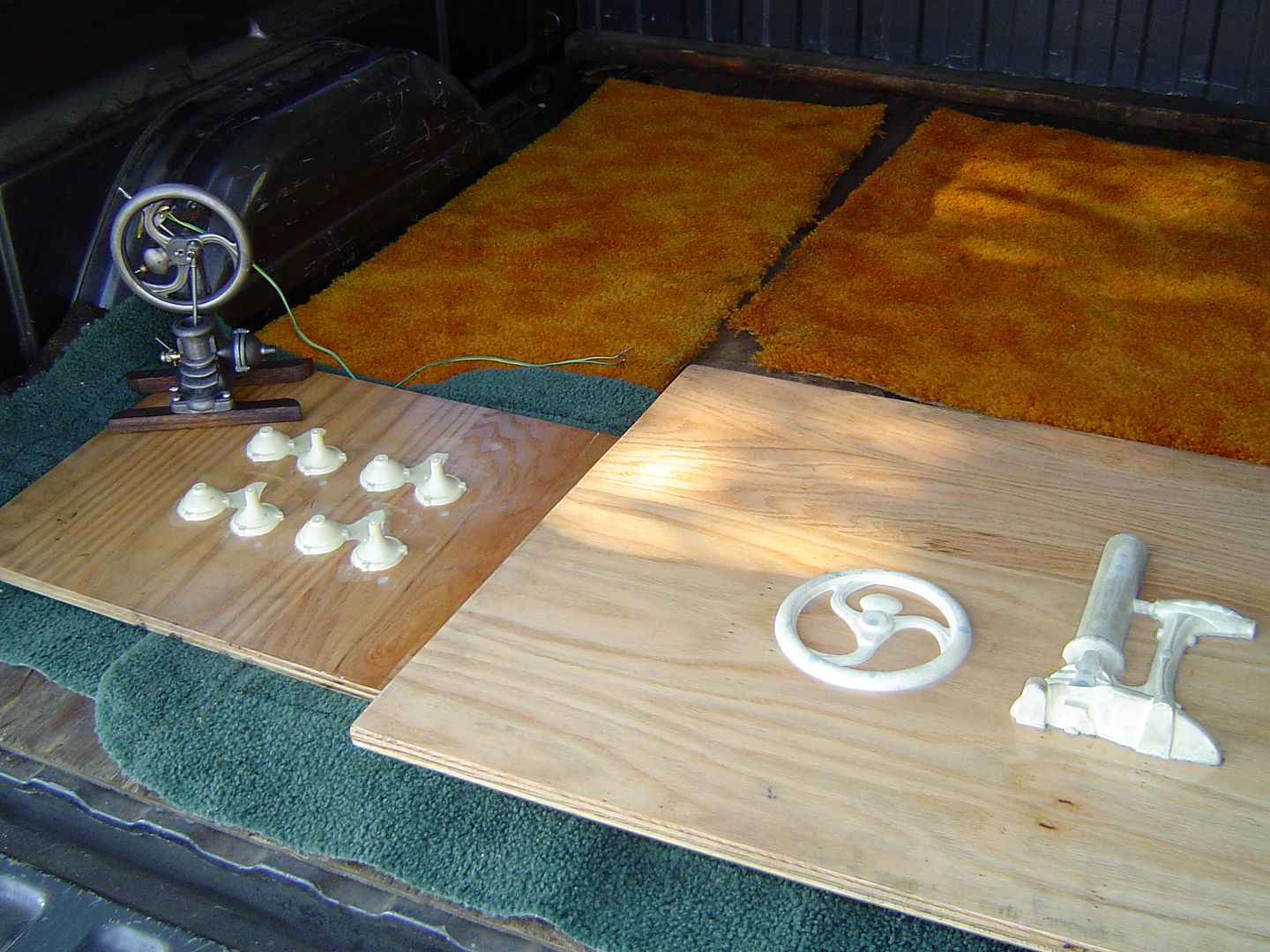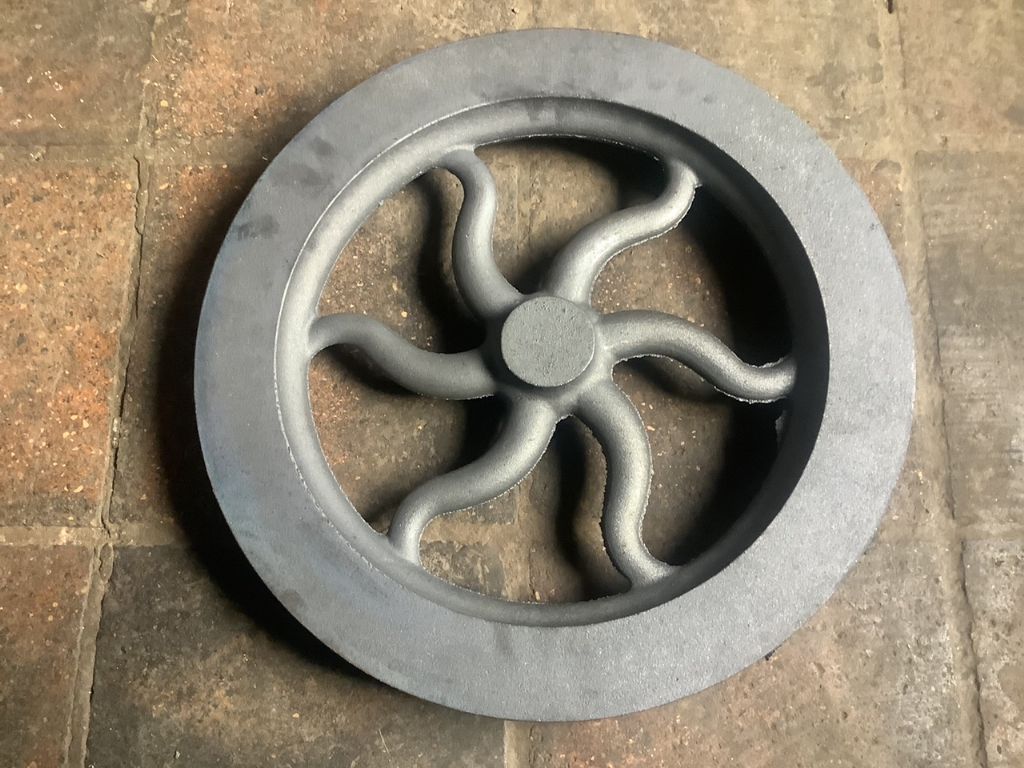Pat's current 3D printer thread got me thinking a bit more about the size of casting sets if
offered for sale.
I offered him the 3D file for this flywheel that will have a finished diameter of 380mm or 15"
That cost £300GBP to get cast based on a weight of 18kg or 40lbs
Scaling the model in CAD and working out the weights and costings on a pro rata basis
An 11" version would cost £134 and a 8.5" version £50. All other castings likely to have the same volume difference so same cost difference too.
So not only would the market for large casting kits be limited by those who could fit them on their machines and be able to physically manage to handle them it would also be limited to those with deep pockets as the cost of the large kit would likely be close to 3 times as much on the material side so say 2 1/2" times the cost as plans would not cost much more.
On the steam engine front there is also another factor to consider and that is running them. As the bore gets taken up to 2" which may simply be a double up of an original 1" bore the actual volume of steam or air needed will go up by the cube of any scaling factor. If you then also figure in wanting to make the engine work that will require a much higher pressure than a display engine running of say 5psi and that working engine will also tend to be run faster than the display engine ticking over as slow as it will go.
So the builder needs to find a suitably sized compressor or steam boiler that will provide that larger volume of air/steam and be able to maintain the required pressure.
Putting a few numbers to it an original engine with 1" bore and 1.5" stroke if double acting has a volume per rev of 2.3cu in.
Same engine scaled up to the "standard" 2" diameter will have a stroke of 3" and the volume per rev goes up to 18.8cu in
Even with second thoughts about the "standard" making the engine too large and dropping down to 1.6" bore x 2.4" stroke volume is 9.6cu in
So FOUR times the volume at the same given speed but more likely TWENTY times when you get upto a couple of hundred rpm and probably 10 times the pressure to at least get some work out of it.
that is going to reduce any potential kit purchasers even further as not many will have a big enough compressor or steam plant to run a large engine. Even if just a couple of additional sets of castings were produced to cover pattern making costsIt would be hard to find buyers.



































































